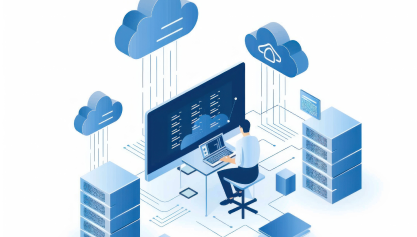Struggling with high cloud bills? Our Cloud Management Team explains how to reduce Cloud expenses with smart resource planning, pricing options, and monitoring tools.
Did you know that Cloud computing allows businesses to scale infrastructure quickly?
However, managing costs can be a complex challenge. Fortunately, AWS, Azure, and Google Cloud Platform (GCP) offer numerous tools to help organizations control spending. Knowing how to use these tools effectively ensures financial resources are directed to the areas that matter most.

Today, we will explore actionable strategies to manage cloud costs through efficient resource allocation, pricing options, and monitoring with automation.
Overview
Efficient Resource Allocation
The first step in controlling expenses is to keep cloud resources in line.
AWS
Tools like Trusted Advisor, Compute Optimizer, and Instance Scheduler can identify over-provisioned resources. Trusted Advisor highlights areas where costs can be reduced, while Compute Optimizer analyzes EC2 usage and recommends adjustments. Instance Scheduler lets you stop instances during non-working hours, reducing idle compute charges. We can also choose instance types based on CPU and memory requirements, enabling auto-scaling, and removing unused EC2, RDS, and EBS resources.
Azure
Reserved Instances provide substantial discounts for predictable workloads, while Virtual Machine Scale Sets allow automatic scaling according to demand. Additional savings come from shutting down non-production environments during off-hours using automation scripts or DevTest Labs. We can use B-Series VMs for intermittent workloads can further reduce costs since these instances accumulate CPU credits during low-demand periods for use during peak times.
GCP
Preemptible VMs and Sustained Use Discounts are powerful cost-saving options. Preemptible VMs are short-lived, making them suitable for batch processing and fault-tolerant workloads, while Sustained Use Discounts reward continuous usage over the month. Custom Machine Types allow precise allocation of CPU and memory, preventing overspending on unnecessary capacity.
Pricing Options and Discounts
Each cloud provider offers pricing programs that can significantly reduce expenses when applied to long-term or flexible workloads.
Savings Plans allow discounts based on consistent compute usage for one or three years, while Spot Instances let you bid for spare capacity at steep discounts. Spot Instances are ideal for transient workloads, such as big data processing or CI/CD pipelines, and can be paired with auto-scaling for dynamic cost management.
Furthermore, the Azure Hybrid Benefit lets you use existing Windows Server or SQL Server licenses to lower costs. Reserved Capacity provides discounts for committing to storage, compute, or databases for one to three years. Spot Virtual Machines offer reduced rates for workloads that can tolerate interruptions.
Committed Use Discounts reward long-term resource commitments, and Spot VMs provide cost reductions for workloads that can handle temporary interruptions. Spend-based commitments allow businesses to pre-define budgets for cloud services and gain discounts, while maintaining flexibility to choose appropriate resources within the spending limit.
Monitoring and Automation
Regular monitoring ensures that spending aligns with usage patterns, while automation helps prevent overspending.
Cost Explorer and AWS Budgets allow tracking and alerting for cloud expenditures. Lambda can automate resource cleanup, including stopping idle instances or deleting old snapshots. Analyzing billing data and trends helps identify cost-saving opportunities before they escalate.
Also, Azure Cost Management offers insights into spending and forecasts future costs. Budgets and alerts notify teams when costs approach predefined thresholds. Automation through Logic Apps or Azure Automation can shut down unused resources or optimize workloads without manual intervention.
Cloud Billing Reports summarize monthly expenses, while Google Cloud Recommender provides actionable suggestions for resizing underutilized resources or committing to discounts. Budget alerts help maintain spending discipline and avoid unexpected charges.
Additional Strategies
- Continuously adjusting resources to match workload demands prevents overspending. This applies across EC2 instances, Azure VMs, and GCP Compute Engine instances.
- Dynamically scaling resources according to demand ensures cost efficiency. Both AWS Auto Scaling and Azure Scale Sets allow for automatic scaling based on performance metrics, reducing costs during low-usage periods.
- Running workloads as serverless functions, such as AWS Lambda or Azure Functions, reduces costs by charging only for actual execution time. This approach works well for intermittent workloads that are compute-intensive but infrequent.
- Costs vary by region, so choosing locations based on both latency and pricing can reduce expenses. Deploying across multiple regions can also improve availability and disaster recovery.
[Need assistance with a different issue? Our team is available 24/7.]
Conclusion
Managing cloud costs requires a mix of monitoring, automation, and strategic planning. AWS provides a broad suite of tools and flexible pricing for diverse workloads. Azure offers deep integration with existing licenses and services, supporting both predictable and variable workloads. GCP stands out with automatic discounts, preemptible VMs, and flexible commitment options. Talk to our team today!







0 Comments